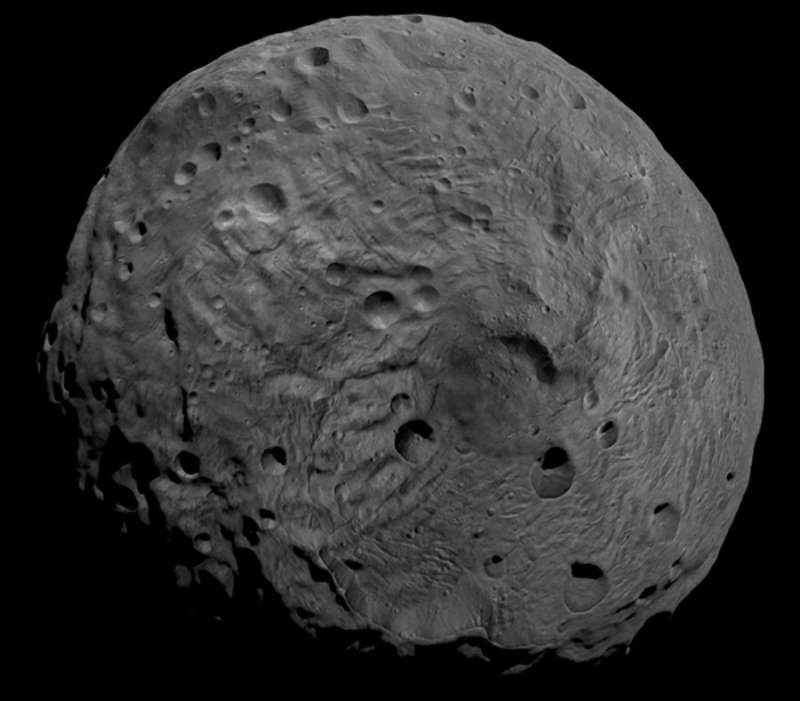The South Pole of Asteroid Vesta

Explanation:
What created the circular structure around the south pole of asteroid Vesta?
Pictured above, the
bottom of the second largest object in the asteroid belt
was recently imaged for the first time by the robotic
Dawn satellite that
arrived last month.
A close inspection of the 260-meter resolution image shows not only hills and
craters and
cliffs and
more craters, but ragged
circular features that cover most of the lower right of the 500-kilometer sized object.
Early speculation posits that the structure might have been created by a
collision and coalescence with a smaller asteroid.
Alternatively, the features might have originated in an
internal process soon after the asteroid formed.
New clues might come in the next few months as
Dawn spirals down toward
the rocky world and obtains images of increasingly high resolution.
Authors & editors:
Robert Nemiroff
(MTU) &
Jerry Bonnell
(USRA)
NASA Web Site Statements, Warnings,
and Disclaimers
NASA Official: Jay Norris.
Specific
rights apply.
A service of:
LHEA at
NASA /
GSFC
& Michigan Tech. U.

